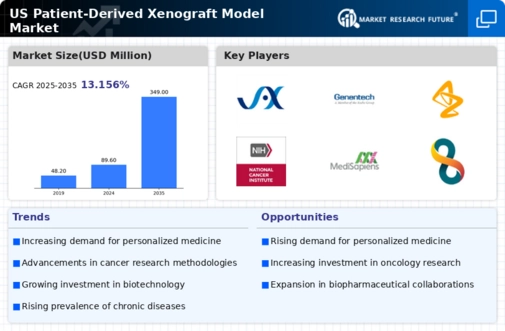The US Patient-Derived Xenograft Model Market has emerged as a crucial component in the landscape of biomedical research and drug development, focusing on providing models that accurately replicate human cancers for preclinical studies. This market is characterized by a complex interplay of biotechnology firms, research institutions, and pharmaceutical companies that continuously innovate to improve PDX models.
The competitive insights in this landscape are shaped by factors such as technological advancements, regulatory frameworks, and the relentless pursuit of personalized medicine. Companies are increasingly leveraging collaborations and strategic alliances to enhance their capabilities and expand their market reach, leading to a dynamic environment where competition drives better patient outcomes and accelerates the path to novel therapies.
The Jackson Laboratory stands out in the US Patient-Derived Xenograft Model Market due to its robust commitment to genetics and cancer research. With a rich history of facilitating innovative experiments, The Jackson Laboratory is recognized for its unparalleled quality in developing and providing patient-derived xenograft models that serve as reliable platforms for drug testing and therapeutic validation.
Their strengths lie in their expert workforce, comprehensive resources, and substantial investment in research and development, which collectively empower them to deliver advanced models tailored to meet specific research needs. The Jackson Laboratory's established reputation and academic partnerships further bolster its presence in the market, providing researchers with valuable resources and support, thereby enhancing its competitive edge.
Genentech holds a formidable position within the US Patient-Derived Xenograft Model Market, leveraging its extensive expertise in biotechnology to create therapies that address unmet medical needs. The company is known for its innovative solutions in cancer treatment, drawing upon its robust pipeline that includes therapies extensively validated through PDX models.
Genentech’s strengths include a strong focus on research collaborations with academic institutions and biopharmaceutical entities, which facilitates access to the latest findings and technologies. Its strategic approach to mergers and acquisitions has further solidified its market presence, allowing for expanded capabilities and diversification of product offerings.
This proactive stance not only enhances Genentech's portfolio but also drives advancements in personalized medicine, solidifying its role as a leader in the US Patient-Derived Xenograft Model Market.
























